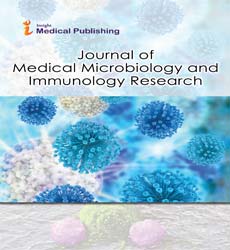ISSN : 2634-7164
Journal of Medical Microbiology and Immunology Research
Antibiotic resistance how it spreads & Prevention
Biswajit Batabyal*
Serum Analysis Center Pvt. Ltd, India
Received Date: 2022-07-14 | Accepted Date: 2022-07-20 | Published Date: 2022-07-27
Abstract
Key facts: Antibiotic resistance is one of the biggest threats to global health, food security, and development today. Antibiotic resistance can affect anyone, of any age, in any country. Antibiotic resistance occurs naturally, but misuse of antibiotics in humans and animals is accelerating the process. A growing number of infections – such as pneumonia, tuberculosis, gonorrhoea, and salmonellosis – are becoming harder to treat as the antibiotics used to treat them become less effective. Antibiotic resistance leads to longer hospital stays, higher medical costs and increased mortality. Genetically, antibiotic resistance spreads through bacteria populations both "vertically," when new generations inherit antibiotic resistance genes, and "horizontally," when bacteria share or exchange sections of genetic material with other bacteria. Bacteria can share genes with each other in a process called horizontal gene transfer. This can occur both between bacteria of the same species and between different species and by several different mechanisms, given the right conditions. Gene transfer results in genetic variation in bacteria and is a large problem when it comes to the spread of antibiotic resistance genes. Ways for bacteria to share their genes: Conjugation: Two bacteria can pair up and connect through structures in the cell membranes and then transfer DNA from one bacterial cell to another. Transduction: There are viruses called bacteriophages that can infect bacteria. These viruses sometimes bring along genes that they picked up during infection of another bacterium. These genes may then be incorporated into the DNA of the new bacterial host. Transformation: Some bacteria can take up pieces of DNA directly from the environment around the cell.
Open Access Journals
- Aquaculture & Veterinary Science
- Chemistry & Chemical Sciences
- Clinical Sciences
- Engineering
- General Science
- Genetics & Molecular Biology
- Health Care & Nursing
- Immunology & Microbiology
- Materials Science
- Mathematics & Physics
- Medical Sciences
- Neurology & Psychiatry
- Oncology & Cancer Science
- Pharmaceutical Sciences
